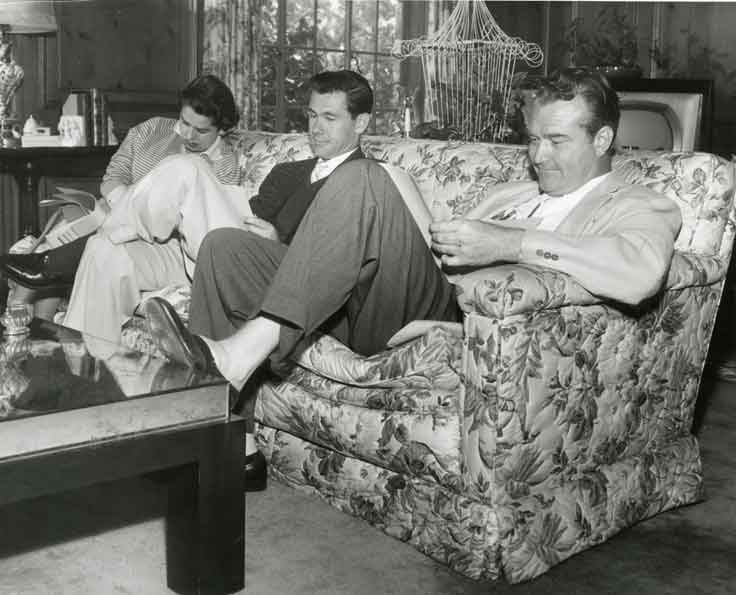
Purchase Tickets
Words, Images and Music Convey the Life of Richard “Red” Skelton

From dunking doughnuts on the vaudeville stage to performing Clem Kadiddlehopper and Freddy the Freeloader on living room television sets across the nation, Red Skelton entertained generations of Americans with his physical comedy style. Born Richard Bernard Skelton in Vincennes in 1913, Red used entertainment as a way to escape his impoverished and rough-and-tumble home life. By 16, Red parlayed his native talent for buffoonery into a job touring with Vincennes entertainer Clarence Stout in 1929 and into radio appearances on the Rudy Vallee Varieties program in 1937.
Beginning in 1938 with Having Wonderful Time, Red Skelton appeared in more than 30 MGM films during the 1940s and 1950s. In 1941, Red premiered his own radio show, The Raleigh Cigarette Program. Skelton was drafted in March 1944, and the popular radio show was discontinued. Red shipped overseas to serve with an Army entertainment unit as a private. His hectic military and entertainment schedule led to a nervous breakdown and a three-month recovery in a military hospital. Following his discharge from the service in 1945, Red returned to the United States and resumed production of his popular radio show. In 1951, Red made the transition to television, starting with NBC and later moving to CBS.
The Red Skelton Show endured for two decades, running from 1951 through 1971. Red incorporated many of the characters from his radio show into the new television series including Clem Kadiddlehopper, the slow-witted country bumpkin; Gertrude and Heathcliffe, the cross-eyed seagulls; The Mean Widdle Kid, whose most well-known expression of “I Dood it!” became a national slogan; and San Fernando Red, the likeable con man. His most famous character, Freddy the Freeloader, debuted on the television show. The Red Skelton Show finished fourth in the ratings in its first year and won Emmy Awards for both Best Comedy Show and Outstanding Writing Achievement. In 1988, the Screen Actors Guild presented Red with a Lifetime Achievement Award and in the following year, Red was inducted into the International Clown Hall of Fame.
Following the cancellation of The Red Skelton Show, Red returned to live performances playing nightclubs, casinos, resorts and such venues as Carnegie Hall. Some of his lesser-known accomplishments include writing hundreds of short stories and essays and creating more than 5,000 musical compositions, some of which were recorded by Van Cliburn, David Rose and Arthur Fiedler. In addition, some of Red’s auctioned clown paintings have sold for up to $80,000. Red died of pneumonia in 1997 at his home in Rancho Mirage, California.
IHS and the Red Skelton Museum Foundation are now engaged in the preservation of Red’s legacy. The Foundation opened the Red Skelton Museum of American Comedy on the Vincennes University campus in 2013. The Foundation transferred its extensive archival holdings to IHS for processing and to make the archive accessible to the greatest number of researchers. These materials are now the basis of the Red Skelton Research Archive, a nationally significant collection of Red’s decades of entertainment and artistic output. The archive holds a wealth of photographs, correspondence, original musical scores, scripts and audio recordings that provide a unique and intimate view into Red Skelton the icon and the person behind the act.
Photos: Red Skelton Museum Foundation, IHS








